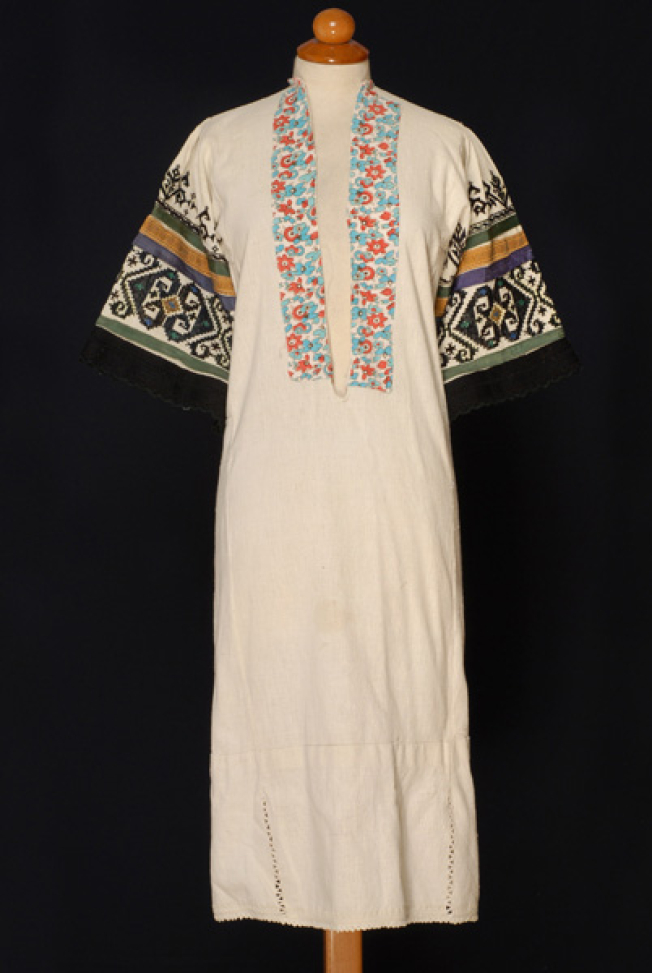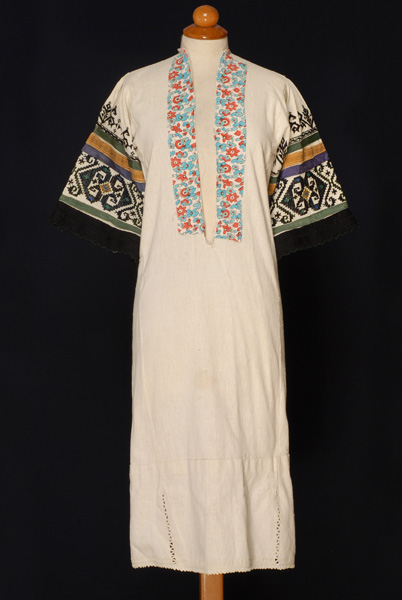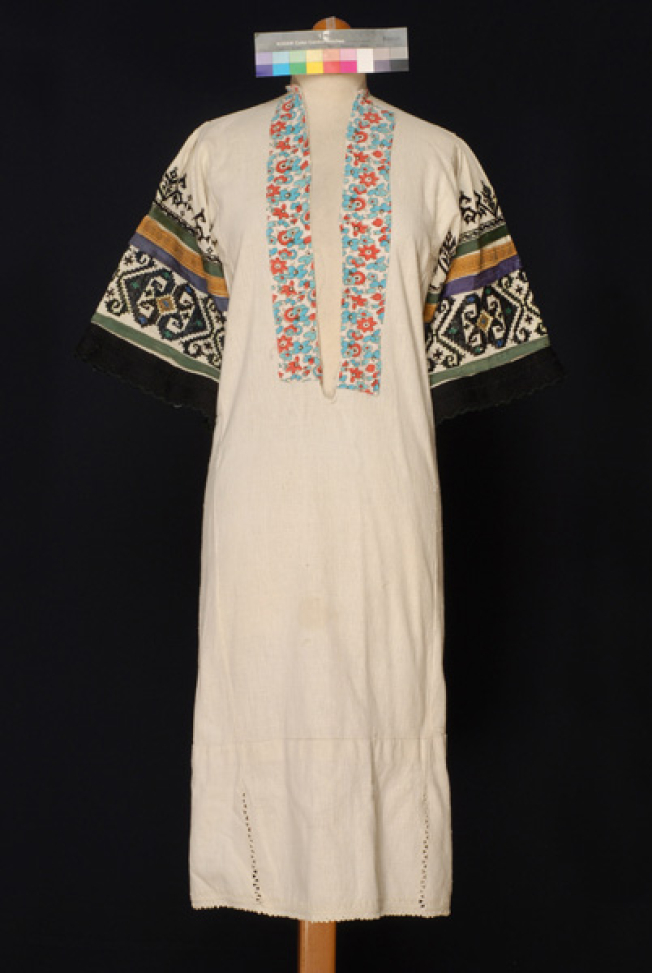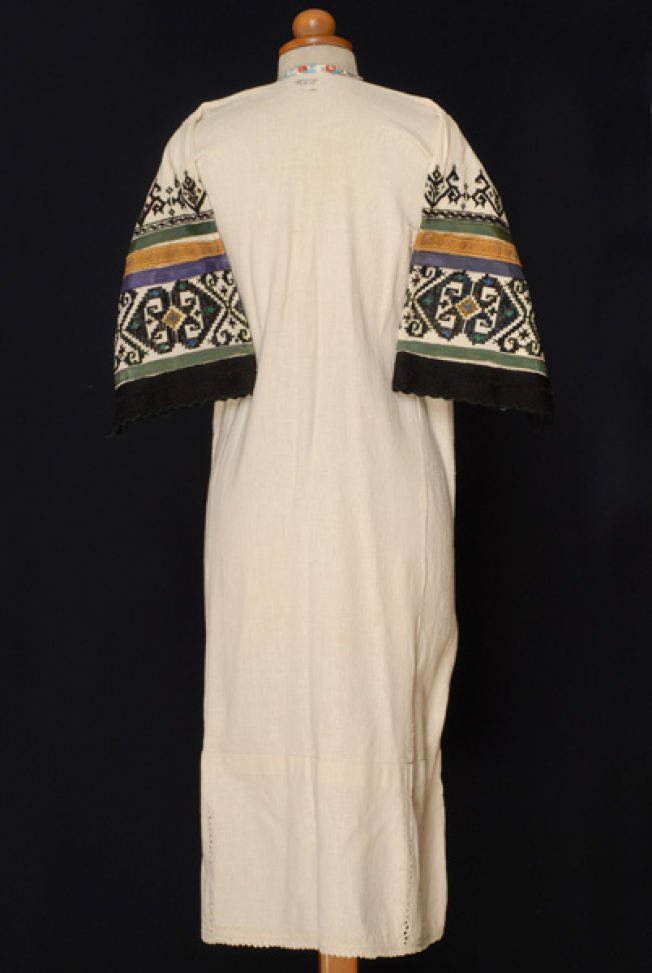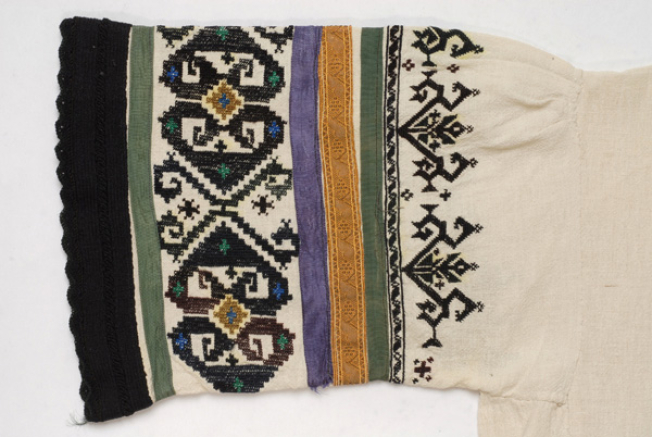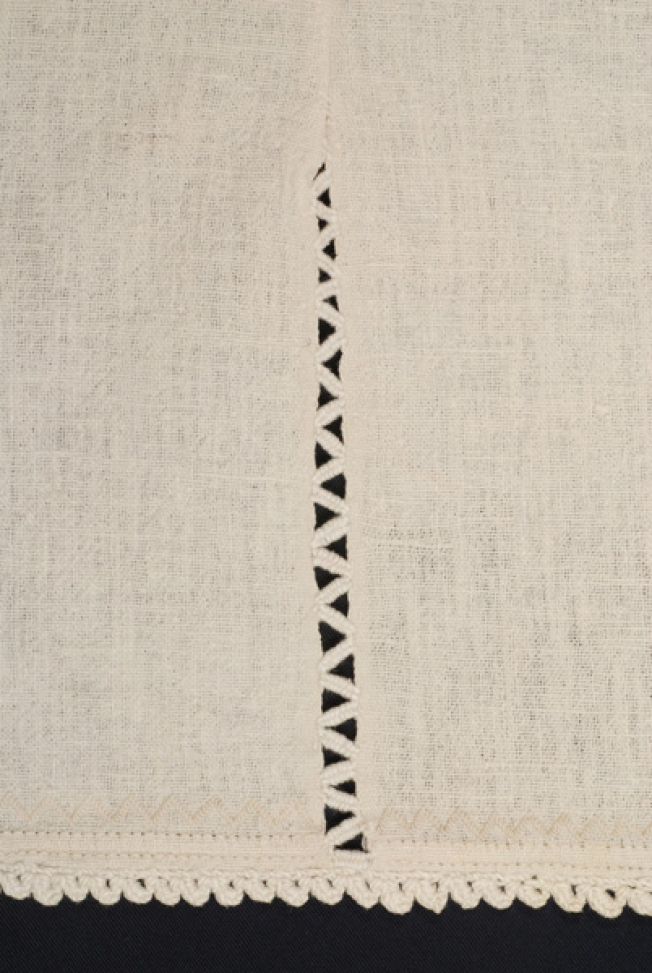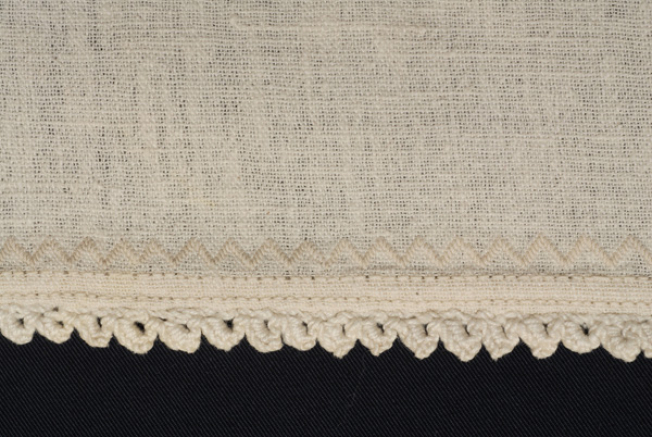chemise
2993/17
Chemise made of white cotton cloth with white embroideries at the border and the sleeves with geometrical motifs
Chemise made of white cotton cloth with white embroideries at the border and the sleeves with geometrical motifs
Chemise made of white cotton cloth of the loom with white embroideries at the border and sleeves with geometrical motifs
Object Identity
Object ID Number
2993/17
Object name
chemise
Other / Local name
p'kam'so
Style
peasant
Production date range
beginning of 20th century
Part of outfit
No
Physical Description
Description
Ποδήρες πουκάμισο από άσπρο βαμβακερό αργαλίσιο πανί με λευκοκεντήματα στον ποδόγυρο και σκουρόχρωμα μοτίβα στα μανίκια. Αποτελεί βασικό εξάρτημα της γυναικείας σαρακατσάνικης φορεσιάς της Θράκης. Το πουκάμισο (π'κάμ'σο) είναι καμωμένο από ένα ενιαίο μονοκόμματο φύλλο μπρος - πίσω και από δύο φύλλα δεξιά και αριστερά, πλάτους 16εκ. και τα δύο μαζί κάτω από τη μασχάλη και 45εκ. στον ποδόγυρο και μήκους 92εκ. Φέρει βαθύ κατακόρυφο άνοιγμα μπροστά μήκους 41εκ. Ο γύρος του λαιμού και το κατακόρυφο άνοιγμα είναι ενισχυμένα με ένα διαφορετικό κομμάτι βαμβακερού εμπριμέ υφάσματος, που σχηματίζει την τραχηλιά. Τα μανίκια ή φρούτα, μήκους 36εκ. και πλάτους 26εκ. είναι διακοσμημένα σε δύο ζώνες που ανάμεσά τους φέρουν επίρραπτες κορδέλες σε μουντά χρώματα (πράσινο - μωβ) και μια τρέσα χρυσή
του εμπορίου, τις λεγόμενες φρέζες. Στην πρώτη ζώνη η διακόσμηση γίνεται με μια σειρά από γεωμετρικά μοτίβα (οξείες γωνίες) με σιγμοειδή άκρα, από τα οποία φύονται σχηματοποιημένα λουλούδια. Στη βάση της διακόσμησης, μπορντούρα με πλάγια παραλληλόγραμμα που συνδέονται μεταξύ τους με μικρούς ρόμβους. Στη δεύτερη ζώνη η διακόσμηση είναι εντυπωσιακή, με μεγάλα μαύρα ρομβόσχημα μοτίβα τα οποία διασπώνται από ένα σταυρό δουλεμένο με χρυσοκλωστή και μπλε μάλλινη κλωστή. Μικρότεροι σταυροί (μπλε - πράσινοι) στολίζουν τα άκρα τους. Ο διάκοσμος είναι δουλεμένος με σταυροβελονιά. Στο τελείωμα των μανικιών έχει προσραφεί μια φαρδιά ταινία από μαύρα μάλλινα γαϊτάνια που καταλήγει σε μάλλινη δαντέλα πλεγμένη με το βελονάκι. Οι ραφές στον ποδόγυρο διακοσμούνται με άσπρη βαμβακερή ένωση, γνωστή ως μέρτζε. Στο τελείωμα του ποδόγυρου γαρνίρισμα με άσπρη βαμβακερή ζικζακωτή μπορντούρα και δαντελίτσα με βελονάκι.
Decoration & Patterns
Decoration
geometric decoration
Decorative patterns / subjects
-
Decoration
stylized vegetal decoration
Decorative patterns / subjects
-
Height
1.160
Width
0.570
Production
Maker / Designer / Brand
women themselves
Production date range
beginning of 20th century
Production place (Country | Geographic Area | Prefecture & Region)
Greece |
Thrace |
Evros
Alexandroupoli
Material
cotton
cotton thread
synthetic ribbon
wool cordon
wool thread
Techniques
applique
counted threadwork,
double cross-stitch
gold embroidery
handwoven fabric
industrially woven textile
lace with little needle
white open-work embroidery,
mertze (kind of perforated stitch)
Use
Population / Cultural / Ethnic group
Sarakatsans
User
woman
Occasion
festive
Date range
beginning of 20th century
Place of use (Country | Geographic Area | Prefecture & Region)
Greece |
Thrace |
Evros
Alexandroupoli
Acquisition
Acquisition method
Gift
Collector
Papantoniou Ioanna
Acquisition date (circa)
6/4/1962
Documentation
Research bibliographic references
Image license
Use the file or the thumbnail of the image according to the license:
CC BY-NC-ND 4.0
Attribution-NonCommercial-NoDerivatives





